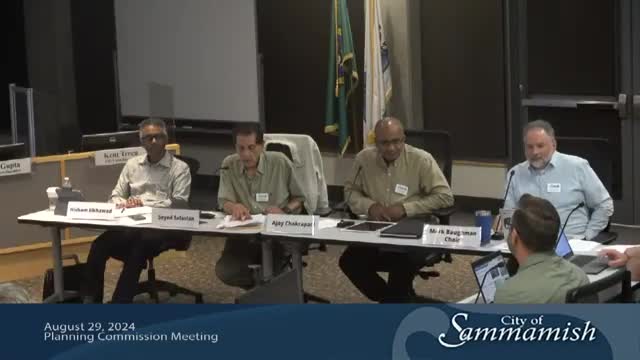Housing Debate Sparks Controversy Over Cottage Development Standards
August 29, 2024 | Sammamish City, King County, Washington
This article was created by AI summarizing key points discussed. AI makes mistakes, so for full details and context, please refer to the video of the full meeting. Please report any errors so we can fix them. Report an error »

In a recent government meeting, officials discussed the future of cottage housing developments, focusing on design standards, open space requirements, and parking challenges. The conversation highlighted the potential for back alleys in these developments, though their inclusion would depend on site specifics rather than being a strict requirement.
Key points included the application of Floor Area Ratio (FAR) regulations, which could allow for approximately 1,800 square feet of building space on a one-acre lot. The meeting also addressed the necessity of common open space, typically around 400 square feet per cottage unit, although this could vary based on the number of bedrooms.
Officials noted that a previous pilot project for cottage housing had expired, but current codes still support low-impact developments. The discussion emphasized the need for careful planning to ensure that new cottage housing fits harmoniously within existing residential neighborhoods, particularly in areas characterized by larger single-family homes.
Concerns were raised about maintaining adequate setbacks between units to preserve the residential feel of R-1 zones, with a proposed standard of about 10 feet. The design aims to promote landscaping and prevent developments from resembling dense townhouses.
Building height regulations were also clarified, allowing for a partial second story to maintain a cottage-like scale. This approach aims to balance the need for space with aesthetic considerations, drawing inspiration from successful cottage projects on the West Coast.
Parking emerged as a significant issue, particularly given the informal nature of existing on-street parking in many areas. Officials acknowledged the need to define legal parking spaces and indicated that parking waivers would likely not be feasible for cottage housing due to the distances involved.
The meeting concluded with a consensus on the importance of establishing baseline design standards while allowing flexibility for creativity in development. This balance aims to ensure that new projects enhance community character without imposing overly restrictive regulations.
Key points included the application of Floor Area Ratio (FAR) regulations, which could allow for approximately 1,800 square feet of building space on a one-acre lot. The meeting also addressed the necessity of common open space, typically around 400 square feet per cottage unit, although this could vary based on the number of bedrooms.
Officials noted that a previous pilot project for cottage housing had expired, but current codes still support low-impact developments. The discussion emphasized the need for careful planning to ensure that new cottage housing fits harmoniously within existing residential neighborhoods, particularly in areas characterized by larger single-family homes.
Concerns were raised about maintaining adequate setbacks between units to preserve the residential feel of R-1 zones, with a proposed standard of about 10 feet. The design aims to promote landscaping and prevent developments from resembling dense townhouses.
Building height regulations were also clarified, allowing for a partial second story to maintain a cottage-like scale. This approach aims to balance the need for space with aesthetic considerations, drawing inspiration from successful cottage projects on the West Coast.
Parking emerged as a significant issue, particularly given the informal nature of existing on-street parking in many areas. Officials acknowledged the need to define legal parking spaces and indicated that parking waivers would likely not be feasible for cottage housing due to the distances involved.
The meeting concluded with a consensus on the importance of establishing baseline design standards while allowing flexibility for creativity in development. This balance aims to ensure that new projects enhance community character without imposing overly restrictive regulations.
View full meeting
This article is based on a recent meeting—watch the full video and explore the complete transcript for deeper insights into the discussion.
View full meeting
